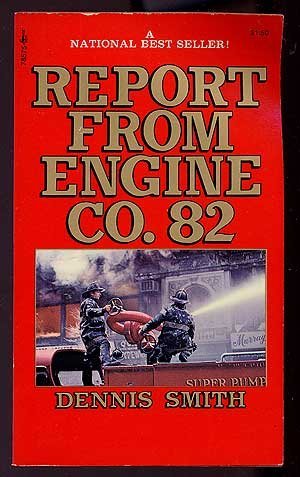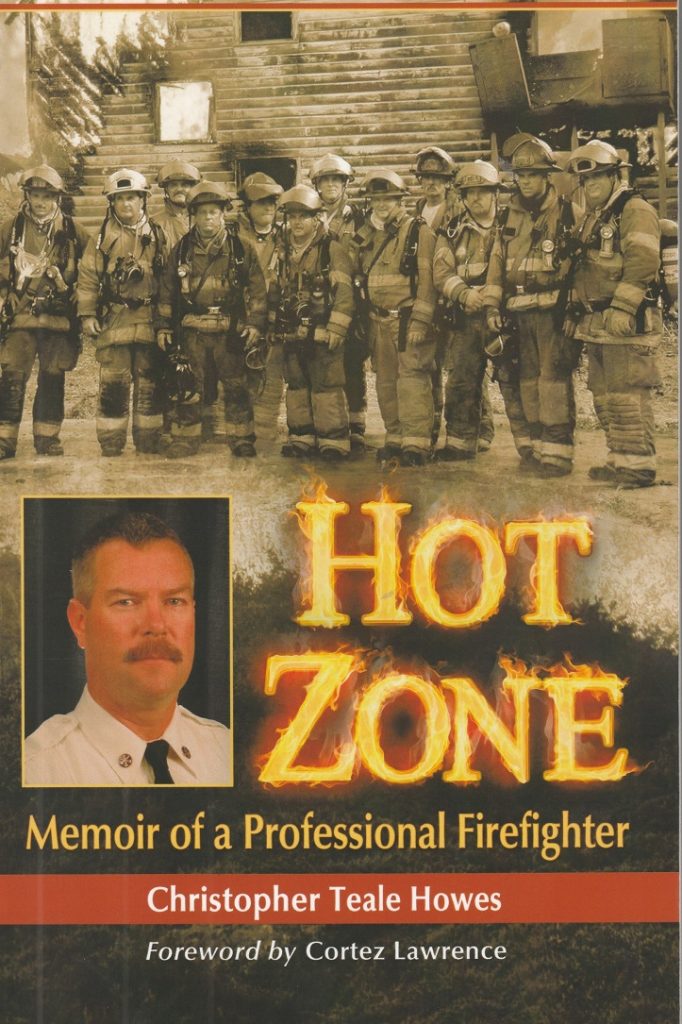By: Robert Avsec, Executive Fire Officer
I remember reading my first book about what it was like to be a professional firefighter not long after I became a volunteer firefighter in the place where I grew up during my school years, Harrisonville, New Jersey. Shortly after I joined the Harrisonville Volunteer Fire Department, I got my hands on a copy of FDNY firefighter Dennis Smith’s seminal work., “Report from Engine Co. 82.” As I devoured each page and chapter, I had the feeling that “I was there,” following Smith and his fellow firefighters as they battled fires in the South Bronx of New York City during what’s often been described as the “fire wars” of the later 1960s and 1970s.
Bu Smith was more than simply a chronicler of the “adrenaline pumping fires” that he and his mates were called upon to extinguish repeatedly during a tour of duty. He went far beyond that as he created “word pictures” of what it was like to be a professional firefighter in a fire station. “Word pictures” that brought to life what it was like working, eating, sleeping, commiserating, and joking in the company of other men who shared his passion for the job they felt blessed to have (He was writing of a time before women would be allowed to join FDNY). Once again, Smith enabled me through his prose to feel like “I was there.”
I’ve read many other books about the firefighter experience over the years, but none of those authors managed to give me that same feeling that “I was there.” But that came to a screeching halt when I started reading “Hot Zone” written District Chief (Ret.) Kit Howes.
Howes has written what I believe will become “the book” that accurately describes the journey of a person in a fire and EMS department from the day they start their probie (entry-level) training to the day they retire.
Chief Howes takes his readers through his career, while the same time describing the journey that the twelve Fire Control Districts of Palm Beach County took on the way to becoming one of America’s largest and most progressive fire and EMS departments, Palm Beach County (Fla) Fire Rescue (PBCFR).
Howes has authored a story that I believe will resonate with readers, as it did with me. I lost count of how many times I thought to myself, “I’ve been there, done that,” during my 26-year career with the Chesterfield (Va.) Fire and EMS Department, as I read his prose.
Howes, like Smith, creates those “word pictures” every fire officer and firefighter can relate to, be they career or volunteer. But he has managed to make the experience just as real for those readers who were not firefighters. He takes the time to explain what’s happening, why it’s happening and what the experience meant to him at the time and to his career as he moved forward and upward with PBCFR from firefighter to driver/engineer to captain, and ultimately division chief.
Firefighting is a technical business, and like many professions, has its own language. I write in the voice of the profession, and the jargon may seem confusing to the lay public. However, I make every effort to provide explanations throughout as needed. I’ve also provided a glossary for those who would like to know more.
District Chief (Ret.) Kit Howes from the Preface in “Hot Zone”
Beyond that, Howes gives his readers tremendous insight into the evolutionary process that resulted in the creation of PBCFR with the consolidation of those twelve Palm Beach County Fire control districts, the first volunteer fire departments to provide fire and emergency services to the predominantly unincorporated areas of Palm Beach County.
Included in the book’s appendices are copies of the memorandum announcing the consolidation of the fire control districts, and the first work contract negotiated between Local 2624 of the International Association of Firefighters and Del-Train Fire Control District #9 where Howes began his career as a professional firefighter (Howes was an important and active member of local 2624 getting that contract and would remain as a member of Local 2624 throughout his career).
Of the twenty-four chapters in “Hot Zone,” none impressed me more than Chapter 15—Women in the Fire Service. Rather than describe the progression of women in PBCFR and their challenges through his “frame of reference,” Howes chose to give the female firefighters of PBCFR their own “voice” in Chapter 15.
I knew that writing about women in the fire service from my own perspective would be a disservice to women, firefighters and biased because of my gender. So, I distributed a questionnaire to women of all ranks and tenures asking them to tell their stories.
In that questionnaire, I asked them to describe their thoughts on why they decided on a fire service career, their dates of hire, their first assignments, and how they felt that first day reporting for duty. I wanted to know how they were treated by their peers and their supervisors, what their assignments were then versus now, and how they adapted to station life. I inquired as to whether they were accepted in the same manner as male recruits and whether the training and educational opportunities met their expectations. I also wanted to know how they balanced their personal and professional lives.
And he accomplished his mission with the inclusion of informative and moving accounts, in their own words, from a firefighter/paramedic, driver/engineer, fire inspector, lieutenant, captain, district chief, and division chief.
District Chief (Ret.) Kit Howes from “Hot Zone” Chapter 15
Howes makes “no bones” about his management style as being that of a “hard ass.” But the reader will clearly see that he’s very mistaken as he describes his interactions and lessons learned from his superior officers, peers, and the company officers and firefighters he worked with during his long and distinguished career. His written words clearly show a man and professional firefighter who never stopped learning and growing as a person and as a fire service professional.
I passionately believe that readers of “Hot Zone,” regardless of who they are, will find Chief Howes’ book to be a “page turner” that they find hard to put down. I know I did; I read the final three chapters in bed finishing at 1:00 AM!
 Fire & EMS Leader Pro The job of old firefighters is to teach young firefighters how to become old firefighters!
Fire & EMS Leader Pro The job of old firefighters is to teach young firefighters how to become old firefighters!


